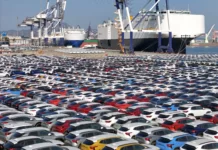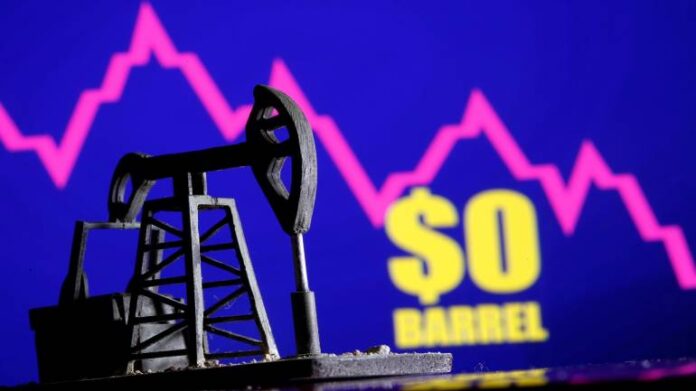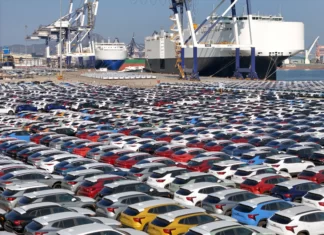Following black gold’s black Monday, a number of Pakistanis have been wondering how the country can cash in on the situation.
As per a technical analysis of the price by Qasim Anwar from AKD Securities, “WTI has bottomed down. This is based on momentum indicators, volatility, and rate of change. Such volatility and movement is often witnessed in the last leg, the end is always a sharp note.”
He added, “Going forward, within a month or two, oil prices are likely to be trading at $29-32 per barrel.”
While Pakistan does not buy WTI and buys primarily from the OPEC basket, the prices of crude is significantly low compared to the start of the year.
Considering the likelihood of prices to gain back lost territory, Pakistan has a number of options to ensure a stronger position.
As per a post on LinkedIn by Fahd Ali Sheikh, an investment banker, Pakistan can use this opportunity to hedge its future oil purchases.
While the government has a number of options to look into, here are some that seem more viable:
- Purchase bulk quantities now and store in onshore storage facilities
In a similar fashion to what China, Japan, and India are doing, Pakistan can allocate a certain percentage of their FX reserves toward the strategic purchase of petroleum. As the lockdown eases, the demand for oil will rise.
Considering how KSA and UAE are giving discounts of roughly $4-6 on the purchase of bulk quantities of crude oil, Pakistan could save out on precious FX that it would spend in the future.
As per sources, Pakistan’s storage capacity is at half a million tons of oil, out of which approximately 300 tons are being utilized. This leaves an approximate 150- 200 thousand ton excess onshore storage.
While OMCs are required to hold 20 days of sales volumes at all times, OMCs are playing it safe by holding for 10-15 days so that they can obtain the best prices.
- Purchase bulk quantities and store offshore
Pakistan can rent or lease Floating Storage Regasification Units (FRSUs) and store oil bought at cheaper rates in a similar way to what Indonesia is doing. However, this option should only be taken into consideration if it is economically viable.
- Buy “oil futures call options”
Options are primarily a right to buy or sell an equity or index without an obligation. A call option is the right to buy. By using future call options, Pakistan can lock in its future oil purchasing levels today – at a fraction of the cost- which global investment banks will charge as the price of the call option” explains Sheikh.
Sheikh adds that this could vary between 1-2 percent of the value of the call option. As a result, in the case that oil prices rebound in the future, Pakistan can use its call option and save.
However, keeping the worst case in mind, if oil prices crash any further, then Pakistan can choose to unwind their position at a nominal loss which will be equal to the cost of buying a call option. Instead, it can purchase from the spot market at a much lower price.
An anonymous source, however, claims that while this seems like a lucrative option, it is unlikely that the current government will undertake this due to the chances of a NAB inquiry on the deal considering the strength of the political economy.
- Undertake leveraged buying
If the government wants to ensure a certain level of FX reserves, it can choose to undertake leveraged buying through borrowing from commercial banks in the GCC at 7-8pc per annum in USD. This would primarily fall at 0.66pc per month. However, this option is expensive considering how it adds to government debt.
While there are apprehensions regarding Pakistan “behaving like a trader”, considering it is a net importer, the government can choose to use its institutions such as PARCO to undertake the trading for them rather than acting on this themselves.
That being said, the oil price crash in the international market is an opportunity to buy and store in order to reduce inflation and save on precious FX that would later be used to purchase at higher prices. Considering how drastic slumps like these are witnessed sparingly throughout history, the government should not let the current full storage capacity prevent it from saving in the medium-term run.

























As per sources, Pakistan’s storage capacity is at half a million tons of oil, out of which approximately 300 tons are being utilized. This leaves an approximate 150- 200 thousand ton excess onshore storage.
Is it 300 tons if 300 thousand tons?